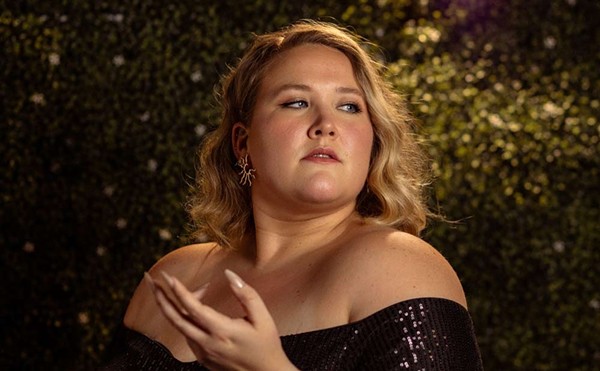Length: 1 hour, 36 minutes
Studio: Wavelength Releasing
Website: http://www.tebweb.com/lastbroadcast
Release Date: 1998-10-23
Cast: Lance Weiler, Stefan Avalos, David Beard, Jim Seward
Director: Lance Weiler, Stefan Avalos
Screenwriter: Lance Weiler, Stefan Avalos
WorkNameSort: The Last Broadcast
Our Rating: 3.50
Blame it on Robert Rodriguez. When the director delivered "El Mariachi" to an unsuspecting film industry in 1992 for a total cost $7,225, he ushered in a new era of budget busting that made frugality an instant ticket to credibility for indie auteurs.
Lance Weiler, however, cites no palpable "Mariachi" influence on his and partner Stefan Avalos' decision to produce their first joint venture, "The Last Broadcast," for a head-turning $900. Instead, the Pennsylvania cameraman says, their discount drama owes its existence to the emergence of new technologies that are revolutionizing film.
The affordability of those new technologies has allowed the duo to craft a tale that incisively comments on the dangers of an increasingly accessible media. "I knew nothing of computers. Not one thing," says Weiler of his days in the film program at Bucks County Community College in his home state, where he and Avalos first met. "Stefan knew a little more," he recalls. "But we are filmmakers. We just used digital video as a tool."
Weiler and Avalos envisioned a dramatic scenario that would exploit and complement their behind-the-scenes modus operandi. In "Broadcast," they portray the hosts of a low-rated public-access program, a hapless team of paranormal researchers who are led to their untimely deaths while pursuing a story suggested by one of their few viewers. In the aftermath of the tragedy, the authorities (and the audience) rely on the footage that the pair left behind to identify the supposed murderer. But when a journalist embarks on his own investigation of the affair, the issue of guilt becomes more muddied. The ensuing mystery raises important questions about the reliability of video as a window into the truth, and torpedoes the presumption that putting cameras and computers in the hands of middle America automatically puts us further down the road to enhanced freedom and justice.
"I'm very much an advocate of access, whether it's public or Internet," Weiler states. "But like anything else, you have elements where people can abuse what they have. You saw it happen with music and publishing, now it's happening with film."
It's ironic, then, that "Broadcast's" completion depended on just such technological populism. Working from a budget that would barely cover James Cameron's dry-cleaning bill, Weiler and Avalos happily enlisted in the cost-conscious ranks of the digital revolution. When gear was required that they couldn't afford, they built and borrowed appropriate hardware.
Their industriousness paid off: Shooting predominantly on digital video and editing in the Adobe Premiere computer program allowed them to capture and rework an avalanche of material that would have proved prohibitively expensive to handle by the usual celluloid methods. "We shot 27 hours of footage for $240. That would have been up to $400,000 in 16mm," says Weiler. "The one thing that keeps bringing people back is that there's a strong story there."
Indeed, "Broadcast" is a reversal of the traditional approach to digital filmmaking. Whereas most desktop-generated features resemble full-length advertisements for effects houses, Weiler and Avalos created an atmosphere of mounting dread that's usually unattainable in their chosen medium.
The filmmakers push the concept even further this weekend when a live satellite feed beams "Broadcast" directly to Maitland's Enzian Cinema & Cafe and four other theaters across the nation. His misgivings about "progress" momentarily cast aside, Weiler waxes Sagan-like in describing the complicated setup that will pull his film from thin air and onto a Windows NT hard drive, only to be retranslated by "more than 500,000 microscopic mirrors" into a projectable image. "This is all a novelty, but it's going to be commonplace a few years from now."
Just before one can begin to wonder if evil agents of Sony have somehow replaced his existentialist mind with a microchip, Weiler tempers his remarks with an observation that squarely recasts him in the role of maverick. "We're not physically paying for 'distribution,' so we retain full ownership," he says. "For the longest time, the filmmaker has gotten the short end of the stick."
If the satellite dish set atop the roof of the Enzian does its job as planned, the ultimate hand-off of that stick will be seen in real time this weekend. This revolution will be televised.

















